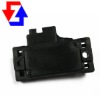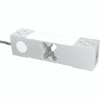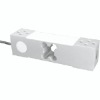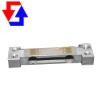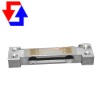- Generator Parts & Accessories[2]
- Sensors[52]
- Cable Ties[17]
- Instrument Parts & Accessories[5]
- Power Accessories[8]
- Switching Power Supply[14]
- Uninterrupted Power Supply (UPS)[1]
- Relays[21]
- Flow Meters[2]
- Auto Sensors[10]
- Pressure Sensors[10]
- Pressure Transmitters[5]
- Level Measuring Instruments[3]
- Auto Relays[4]
- Other Auto Electrical Systems[1]
- Household Scales[7]
- Skin Analyzer[7]
- Weighing Scales[4]
- Mobile Phone Batteries[1]
- Other Motor Accessories[1]
- Contact Person : Mr. Chen Xingkai
- Company Name : Joint Sensor Instruments (Shenzhen) Ltd.
- Tel : 86-755-83104666
- Fax : 86-755-83116697
- Address : Guangdong,Shenzhen,B401, No. 8 Lane 1 Anhua Industrial Park, Section 35 Baoan District
- Country/Region : China
- Zip : 518000
Mini100 Vibration Sensor
Detailed Product Description
The MiniSense 100 is a low-cost cantilever-type vibration
sensor loaded by a mass to offer high sensitivity at low
frequencies. Pins are designed for easy installation and
are solderable. Horizontal and vertical mounting options
are offered. The active sensor area is shielded for
improved RFI/EMI rejection. Rugged, flexible PVDF
sensing element withstands high shock overload. Sensor
has excellent linearity and dynamic range, and may be
used for detecting either continuous vibration or impacts.
The mass may be modified to obtain alternative frequency
response and sensitivity selection (consult factory).
The MiniSense 100 acts as a cantilever-beam
accelerometer. When the beam is mounted horizontally,
acceleration in the vertical plane creates bending in the
beam, due to the inertia of the mass at the tip of the beam.
Strain in the beam creates a piezoelectric response, which
may be detected as a charge or voltage output across the
Electrical Description
The Minisense 100 behaves electrically as an "active" capacitor: it may be modelled as a perfect voltage source (voltage
proportional to applied acceleration) in series with the quoted device capacitance. Any external input or load resistance
will form a high-pass filter, with a roll-off frequency as tabulated above, or calculated from the formula f(c) = 1/(2 RC).
The impedance of the sensor is approximately 650 M ohm at 1 Hz. The active sensor element is electrically shielded,
although care should be taken in the PCB design to keep unshielded traces as short as possible.
electrodes of the sensor.
The sensor may be used to detect either continuous or
impulsive vibration or impacts. For excitation frequencies
below the resonant frequency of the sensor, the device
produces a linear output governed by the "baseline"
sensitivity. The sensitivity at resonance is significantly
higher. Impacts containing high-frequency components
will excite the resonance fre-quency, as shown in the plot
above (response of MiniSense 100 to a single half-sine
impulse at 100 Hz, of amplitude 0.9 g). The ability of the
sensor to detect low frequency motion is strongly
influenced by the external
electrical circuit, as
described below
(see "Electrical
Description").


